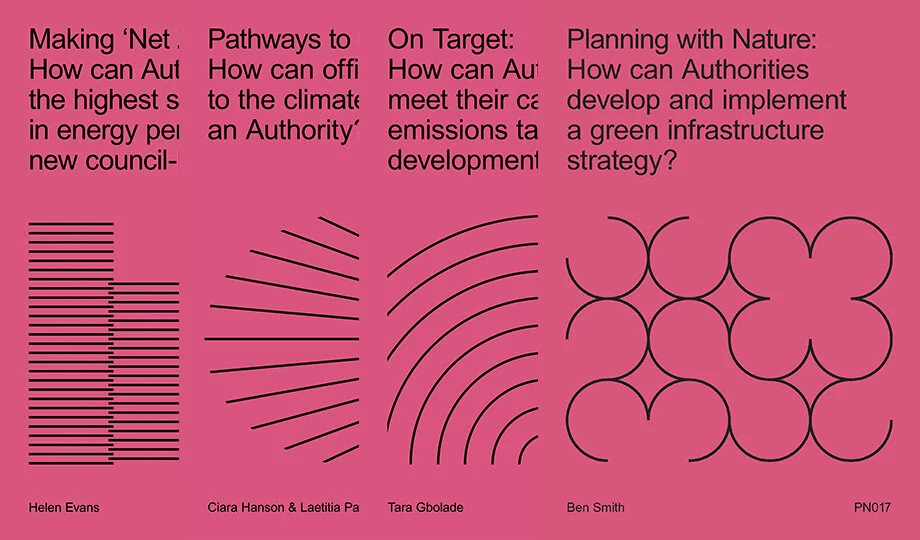Full UKGBC Article Here.
UKGBC BLOG: Taking climate action in local government – the case for a collective approach
Public Practice Associates Helen Evans, Laetitia Pancrazi, Ciara Hanson, Tara Gbolade and Ben Smith make the case for collective local action to tackle the climate crisis.
Local authorities are ideally positioned to drive climate action within their area. Sustainability is already at the heart of what we do through our role in planning, maintaining assets and infrastructure, helping our most vulnerable residents, facilitating investments as well as supporting local businesses. Following the COVID-19 pandemic, the public sector has a unique opportunity to help communities become more resilient and to build back better, while simultaneously addressing the climate crisis. It is this ability to manage change across the full range of services and sectors that places local authorities in a strong position to deliver climate action.
290 authorities have now declared a climate emergency[1], but how does local government turn these declarations into action? During our placements as Public Practice Associates – a programme which places experienced built environment practitioners across local authorities in London and the south east – we identified a range of financial, political, organisational, and technical barriers faced by officers in building the business case for climate action and delivering sustainable projects. In response, we have developed a series of Practice Notes to help any local authority officer overcome some of these barriers and lead on instigating climate action.
‘Making Net Zero Happen’
Helen Evans produced her Practice Note Making ‘Net Zero’ Happen while at London Borough of Newham to unpick the approvals and stakeholder consultation process required for local authority officers to successfully make the case for building high-performance Passivhaus homes. It is accompanied by supporting documentation aimed at officers and team leaders delivering low-energy homes, including a job description for an in-house Sustainability Lead, templates for an Implementation Plan and a Passivhaus FAQs document.
‘Pathways to Climate Action’
In Pathways to Climate Action, Laetitia Pancrazi (Ashford Borough Council) and Ciara Hanson (London Borough of Havering) identify two pathways to climate action: one for Climate Officers and another for those whose remit is not specifically sustainability. The Practice Note provides templates for producing a sustainability action plan and conducting an in-house audit of existing resources, it also contains a skills survey and a baseline and benchmark review.
‘On Target’
Tara Gbolade’s Practice Note, produced while in her role at Epping Forest District Council, explores how local authorities can meet their carbon emission targets in new developments. On Targethighlights the performance gap that exists in developments between the design stage and completion on site. It provides templates including a sustainability tracker for officers to use when tracking sustainability certification post-completion (pre-occupation), and a roadmap highlighting clear processes that officers can adopt in developing borough-specific Sustainability Guidance
‘Planning with Nature’
In Planning with Nature, Ben Smith explores how local authorities can make the case for a Green Infrastructure Strategy (GIS). Written within the context of his placement at Epping Forest District Council, his Practice Note discusses the growing body of evidence on the social, economic and environmental benefits of green spaces and provides guidance towards producing and implementing a GIS.
There is an established body of evidence demonstrating that investment in sustainability can deliver tangible co-benefits to their local communities. For example, maximising green space has positive impacts on physical and mental health, with every £1 invested in green infrastructure delivers £27 of environmental and social value.[2] Similarly, achieving a modal shift towards active travel reduces air pollution, alleviates congestion, and contributes to health and well-being improvements. Furthermore, adopting Passivhaus standards contributes to reducing fuel poverty, with tangible co-benefits for health and well-being.[3]
Over the course of our one-year Public Practice placements, we aimed to begin to deliver some of these co-benefits, while driving climate action. Examples of the types of work Associates were able to deliver include: implementing a protocol to engage with natural environment experts on planning applications; securing an Ecological Clerk of Works planning condition on a strategic application for the first time; securing approval for a Local Energy Design Strategy to target the Passivhaus standard for all new homes; and developing measurable paths for embedding environmental and socio-economic sustainability in new developments. Public Practice Associates engaged in this area also founded the Climate Response Working Group, which promotes knowledge-sharing, problem-solving and upskilling amongst its members to increase the public sector’s responsiveness to the climate crisis.
Sustainability must permeate all local authority functions. To effectively respond to the climate crisis, local authorities must abandon silo working, adopt multi-disciplinary and inter-sectoral approaches within their own organisation, while building-on the expertise and skills of other authorities and sectors. It is now time for all built environment professionals and local authority officers to embed sustainability in their role and lead on tackling the biggest crisis we will ever face. By addressing our individual responsibilities we can contribute to a collective wave of action across organisations and make a real systemic contribution to climate justice.
[1] Climate Emergency: List of Councils. Available at: https://www.climateemergency.uk/blog/list-of-councils/ [accessed September, 2020]
[2] GLA. (2017). Natural Capital Accounts for Public Green Space in London. [pdf] GLA. Available at: https://www.london.gov.uk/sites/default/files/11015viv_natural_capital_account_for_london_v7_full_vis.pdf
Green Infrastructure Task Force. (2020). Natural Capital: Investing in a Green Infrastructure for a Future London. [pdf] GLA. Available at: https://www.london.gov.uk/sites/default/files/gitaskforcereport.hyperlink.pdf
[3] Ashden (2019). Climate action co-benefits – cutting carbon and improving people’s lives. [pdf] Passivhaus Trust. Available at: https://www.passivhaustrust.org.uk/UserFiles/File/PH%20planning/2019.08_CAC-Chapters-all-FINAL.pdf


